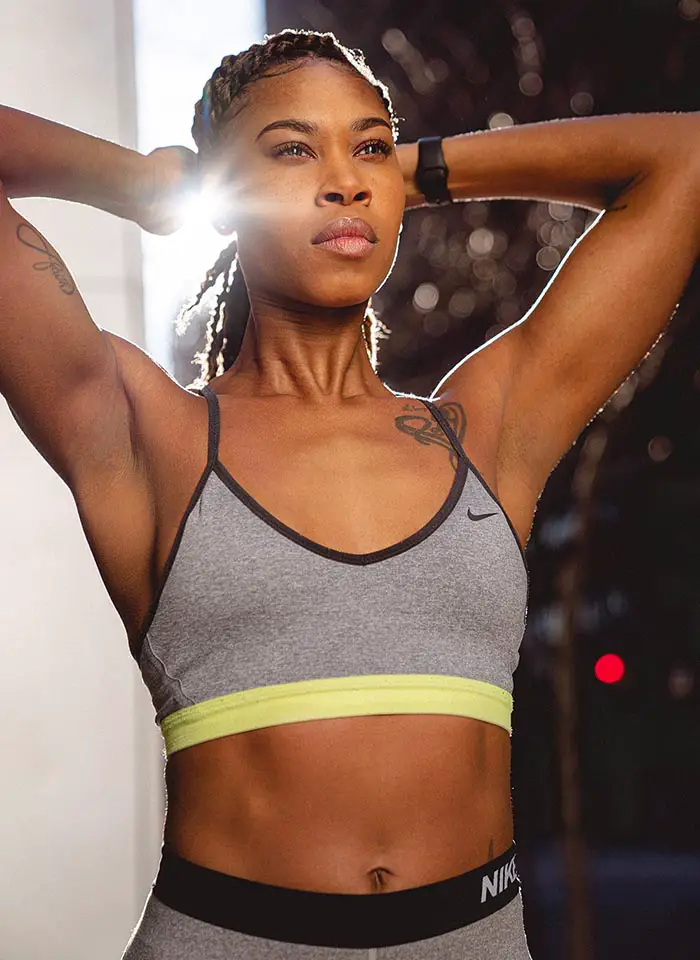How To Go Vegan — A Guide for Athletes
Nowadays, going vegan has stopped being perceived as just one of the fading trends. Instead, it has become a significant movement, gathering multiple new followers from young generations.
Still, many people believe that being a vegan comes with too many limitations to be worth the trouble. After all, most commonly used products are made using animal-derived ingredients.

One group that is highly hesitant to join the vegan movement is athletes. Powerlifters and runners alike frequently ask: is a plant-based diet combined with some supplements really enough to reach my fitness goals? The answer, which might be surprising for some, is yes.
Animal-friendly substitutes like vegan creatine and protein-rich plants are already well-established parts of many vegan athletes’ diets. Furthermore, the process of going vegan itself is pretty straightforward and composed of easy-to-integrate steps. These are: planning ahead, slowly replacing all the meat in your diet with plant-based protein sources, avoiding products containing gelatin and other animal products, and swapping non-vegan items for vegan alternatives.
Join us as we go through all of the steps every professional athlete needs to take to transition to a vegan lifestyle!
Step 1: Planning Ahead
Following a healthier lifestyle always necessitates adjustments in your diet, such as opting for unsweetened chocolate chips to reduce sugar intake or using chickpea flour to increase the amount of protein in your meals. And like with any other dietary change, going vegan requires some preparation.
You’ll need to plan your meals and snacks ahead of time so that you have something to eat when you’re out and about. This step is especially important in the early stages of your vegan journey when you might not yet be used to cooking without meat or dairy products.
One way to make things easier is to create a meal plan that includes plenty of vegan-friendly recipes. There are plenty of cookbooks, websites, and even smartphone apps devoted to plant-based eating. You can also find tons of recipes on popular social media platforms like Instagram and Pinterest.
Remember not just to include food but also other items like vitamins, supplements, and more. This way, you will ensure your vegan diet is fulfilling and full of necessary nutrients.
Step 2: Slowly Replacing Meat With Plant-based Protein Sources
Many athletes are hesitant to go vegan because they worry that they won’t get enough protein from plants. However, as long as you include a variety of protein-rich foods in your diet, you should have no trouble meeting your daily requirements.
This step, however, requires you to be extremely careful. Many people who decide to go vegan often quit their diets after just a few days due to a lack of energy or inadequate physical performance. This is because you need to replace all the iron, zinc, and other microelements you used to get from animal products with supplements made from plants.
The most popular plant-based protein sources used by athletes include lentils, spinach, beans, oats, chickpeas, rice, quinoa, and tofu.
Plant-based proteins are usually lower in amino acids than animal proteins. This means that they are digested slower and, therefore, are harder to convert into carbohydrates on demand. Additionally, plant-based proteins tend to be more expensive than their animal-based counterpart. These two factors combined lead us to the conclusion that an athlete might have to use slightly more calories when eating vegan than when sticking to an omnivorous diet.
A good way to start transitioning to a vegan diet is by slowly replacing the meat in your meals with plant-based protein sources. This could mean adding lentils to your soup, swapping beef for black beans in a burrito, or using tofu instead of meat in a stir-fry or scrambled eggs. As you get more comfortable with vegan cooking, you can experiment with more innovative recipes and combinations.
Step 3: Looking Out for Non-vegan Ingredients in Plant-based Products
One of the most common stumbling blocks for new vegans is learning which products contain animal-derived ingredients. Gelatin, for example, is a substance often used in food manufacturing made from collagen extracted from animal bones, tendons, and skin.
It can be tricky to avoid products containing gelatin and other animal-derived ingredients, but it’s definitely not impossible. The best way to start is by reading the ingredient lists on all the products you buy and looking for words like “gelatin,” “collagen,” “casein,” and “L-cysteine.” This is especially important when it comes to selecting cosmetics and toiletries, as those may still contain traces of animal byproducts.
There are also several online databases that list the ingredients of common brands and products. Make sure that everything you put on your body does not have any animal products in it. Also, keep in mind that even though some of the ingredients might be plant-based, it does not mean they are necessarily non-toxic for humans or harmless to the environment. For instance, sodium lauryl sulfate found in many soaps is known for causing swelling, rashes, and eye irritations, among others.
Step 4: Swapping Non-vegan Items for Vegan Alternatives
The final step in transitioning to a vegan lifestyle is replacing non-vegan items with vegan alternatives. This could mean using almond milk instead of cow’s milk, buying vegan cheese instead of regular cheese, or using a vegan mayonnaise substitute instead of real mayo.
In addition to stocking up your kitchen, go shopping for new clothes and shoes. Having a proper wardrobe will help you get rid of any clothing pieces made of animal products — wool, leather, or fur — and replace them with high-quality non-animal alternatives.
There are many vegan alternatives available on the market today, so you should have no trouble finding replacements for your favorite non-vegan items. Just be sure to read the labels carefully to ensure that the product is actually vegan-friendly.
Conclusion
Although it may seem challenging at first, going vegan is not as difficult as many people believe. There are plenty of plant-based protein and creatine alternatives that can boost your performance, while vitamin B12 supplements will prevent any possible health issues associated with a vegan diet. The most important thing to do is gradually replace meat with plant-based protein sources.
Make sure to consume enough iron and zinc by eating legumes, nuts, and other foods rich in these microelements. Additionally, swap your other items like clothes with animal-friendly alternatives to fully embrace the vegan lifestyle.
Going vegan does not have to be a tiresome process. In fact, nowadays, many world-class athletes practice a vegan lifestyle to become leaner and healthier. Are you ready to join them?
##





